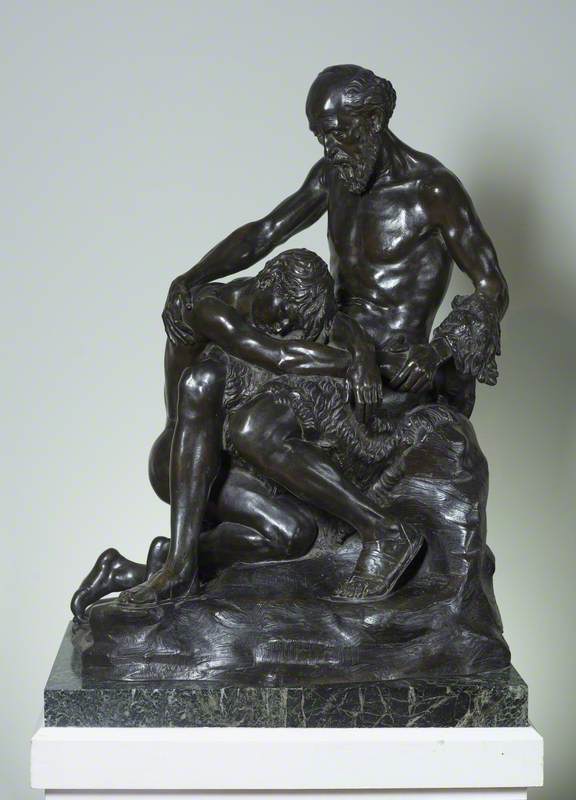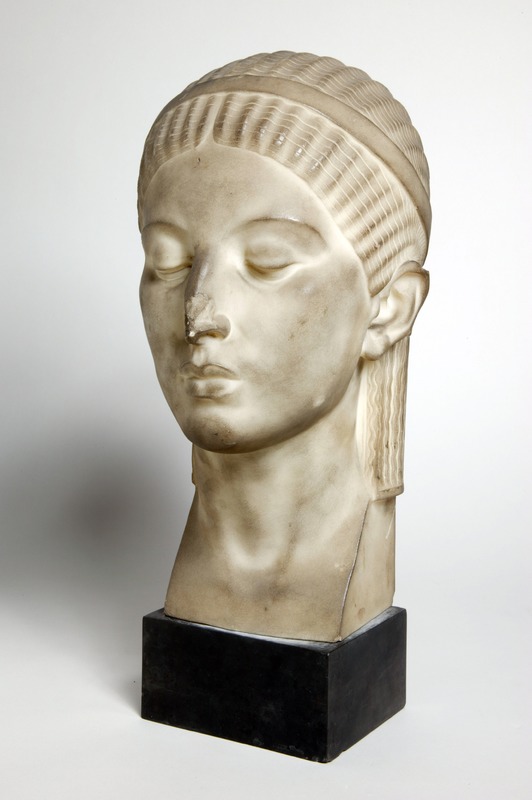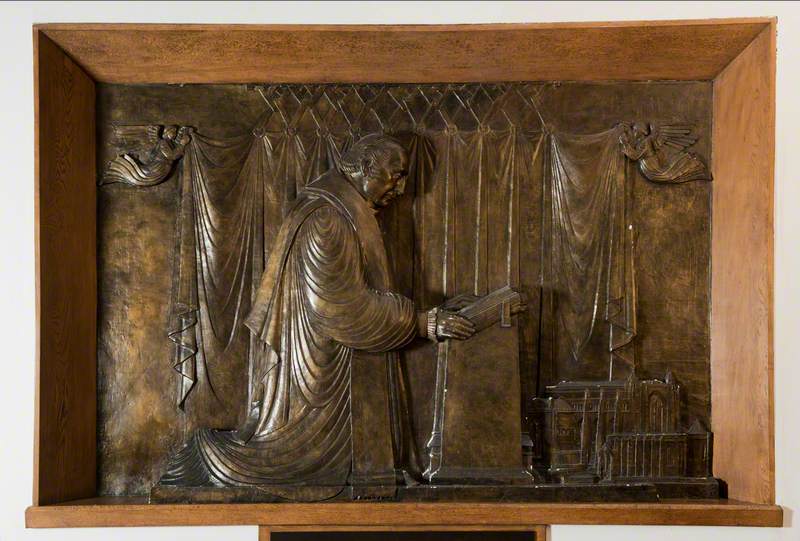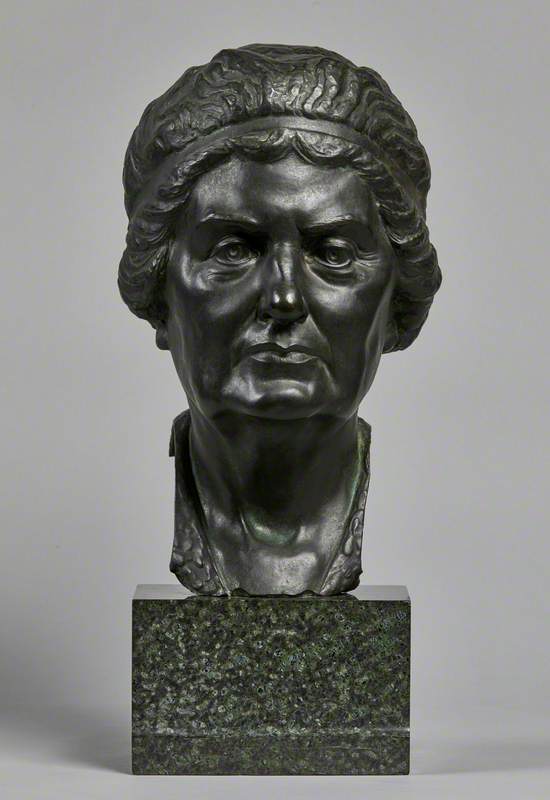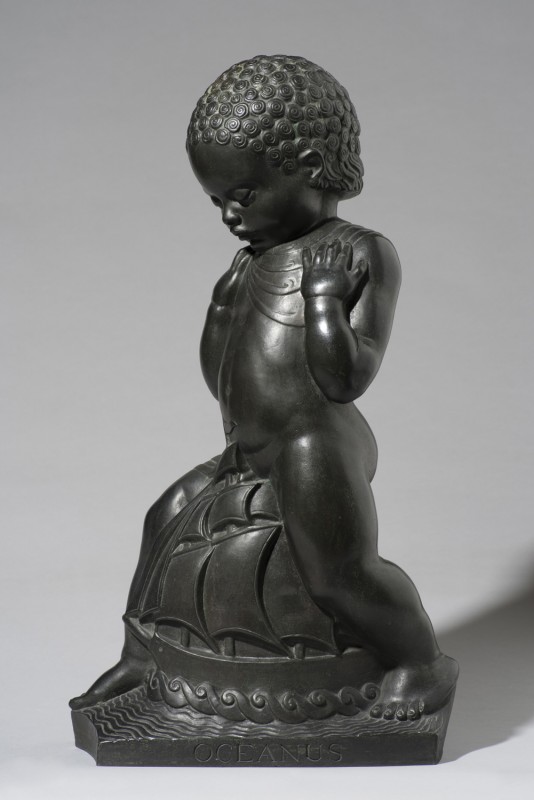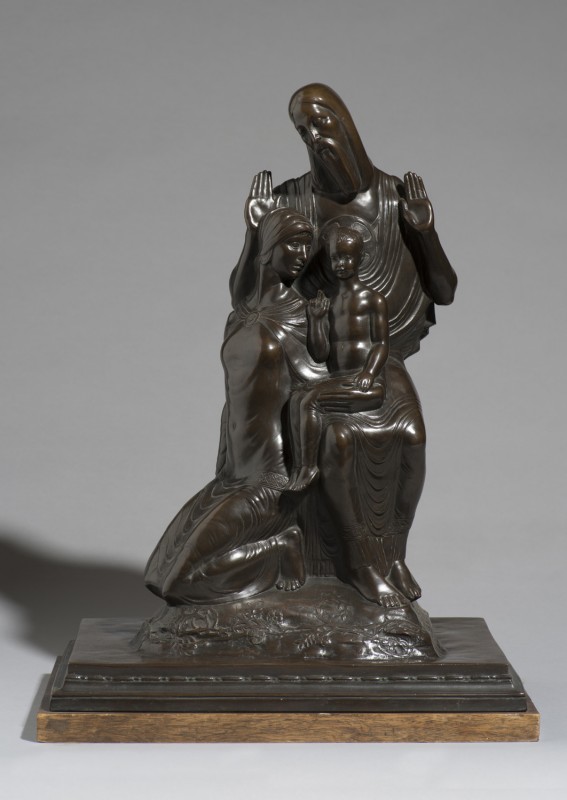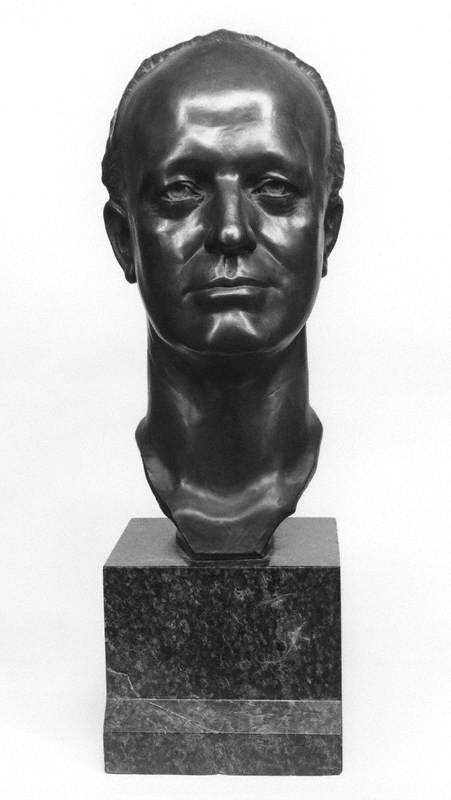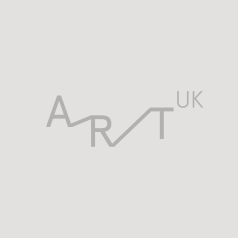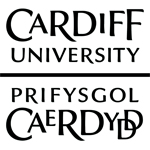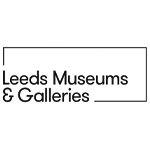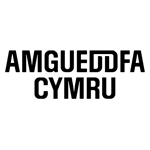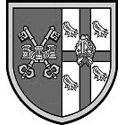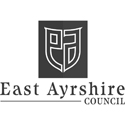David Evans was born in Moston,, Manchester, England, on 18 June 1893 [1] and studied at Manchester School of Art; the Royal College of Art in London where he was taught by Francis Derwent Wood; and, following service war service in the Royal Flying Corps during World War One, at the Royal Academy Schools in London. He was awarded a British Institution Scholarship, 1921, the Landseer Prize in 1922, and the Prix de Rome in 1923. Following his return from Rome he embarked on a career as a sculptor, painter and ceramist. He also taught at Hammersmith School of Art and Central School of Arts and Crafts in London and at Bromley School of Art in Bromley, Kent,
In 1929 he moved to the USA. He was sculptor-in-residence at the Cranbrook Academy of Art in Bloomfield Hills, Michigan in 1929-30. He also taught at New York University. He returned to England in 1931.
During the 1920s he produced designs for Pilkington's Tile & Pottery Co. Ltd. A photograph of book rests designed and modelled by Evans for Pilkington's is illustrated in 'Decorative Art' 1930 (p.159).
Sculptural projects by Evans included large wooden figures of 'Gog' and 'Magog' for the Guildhall, London; Bishop Chevasse Memorial in Liverpool; the Nurses Memorial at Liverpool Cathedral; a memorial at the Reverend W. David Kelly College in Tavistock; sculptures of 'Science' and 'Letters' on either side of the doorways to the central reading room of Cambridge University Library; panels at the main entrance to County Hall in Carmarthen; a bust of Captain Coram for the Foundling's Hospital in London; the RAF Memorial at Clement Dane Church in London; and a wood carving for University College, London. His sculptural projects in America included figures for St. Thomas's Church in New York, a fountain for the National Golf Club of America in Southampton, New York; and work at the Rockefeller Center, Radio City, Brooklyn Post Office, National City Bank in New York; and at a bank on Wall Street in New York City.
In 1948 he made a statue in plaster of Henry VIII for the film 'The Guinea Pig'.
Evans exhibited frequently at the Royal Academy in London from 1921 to 1959. He also exhibited at Manchester City Art Gallery; Glasgow Institute of the Fine Arts; and at the Walker Art Gallery in Liverpool. He also participated in the Art Competitions held as part of the Olympic Games in Los Angeles in 1932 and London in 1948.
He was elected an Associate of Royal Society of British Sculptors (ARBS); a member of the Art Workers Guild in 1938; and a Fellow of Royal Society of British Sculptors (FRBS) in 1938.
His address was given as 8 Paultons Street, Chelsea, London in 1921; 3 Uverdale Road, King's Road, London in 1922 and 1923' British School at Rome in 1924; 2 Observation Gardens, London in 1927; 2 Marlborough Studios. 12a Finchley Road, London in 1929. He moved to the USA later that year and arrived in New York City on 14 October 1929. His address was given as Bloomfield Hills, Cranbrook, Michigan in 1930; and 120 East 34th Street, New York City in 1931. Later that year he returned to England and his address was given as c/o A.B. Burton, Esq., Summer Road, Thames Ditton, Surrey in 1932; 62b Clifton Hills, London in 1933; 10a Girdlers Road, Brook Green, London in 1934 and 1939; and at 26 Cole Green Lane Welwyn Garden City, Hertfordshire in 1939 and 1959. He died in St. Albans, Hertfordshire on 14 March 1959
_____
[1] 'Who's Who in Art' (London: The Art Trade Press, 2nd edition, 1929 p.144) gives Evans's year of birth as 1895, whereas ‘Who’s Who in Art’ (London: The Art Trade Press, 3rd edition, 1934 p.137) gives it as 1893. The latter date correct. This confirmed by his entry in the 1939 National Register.
